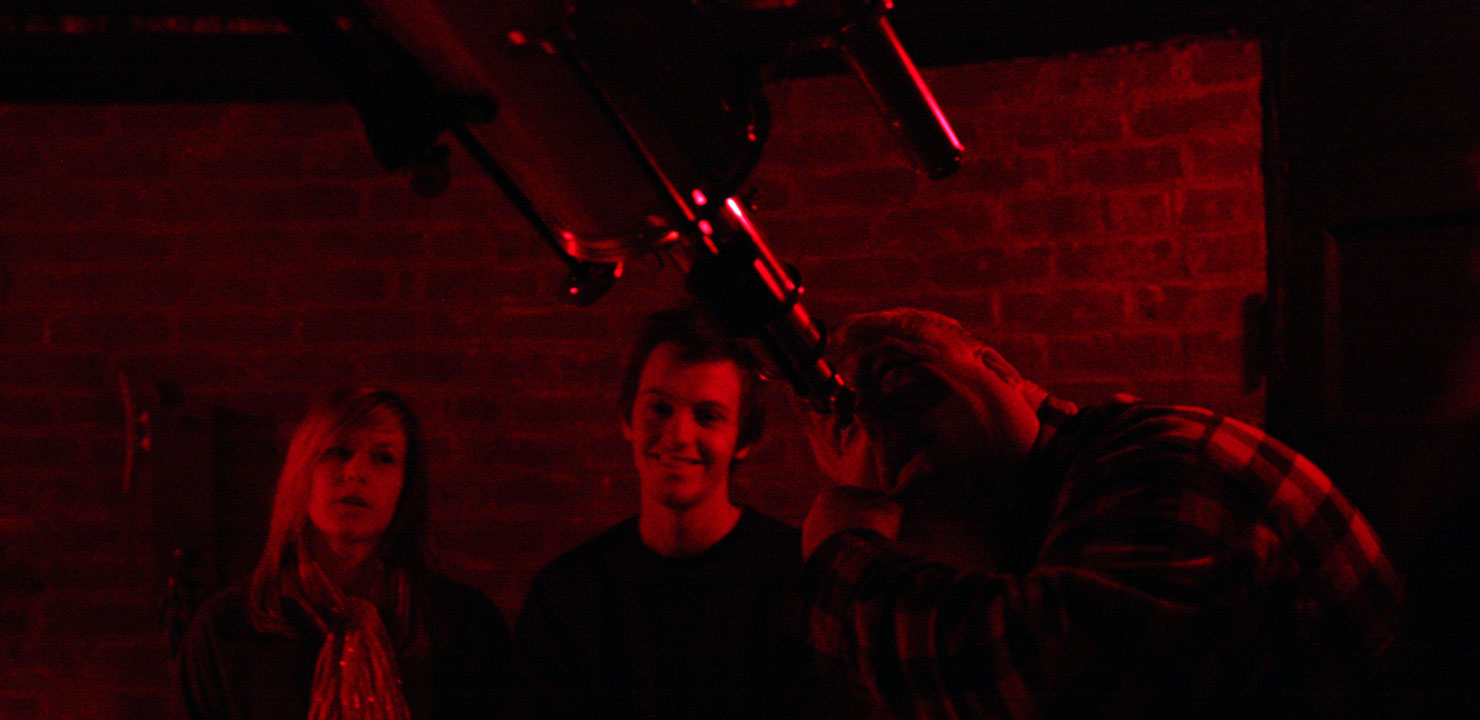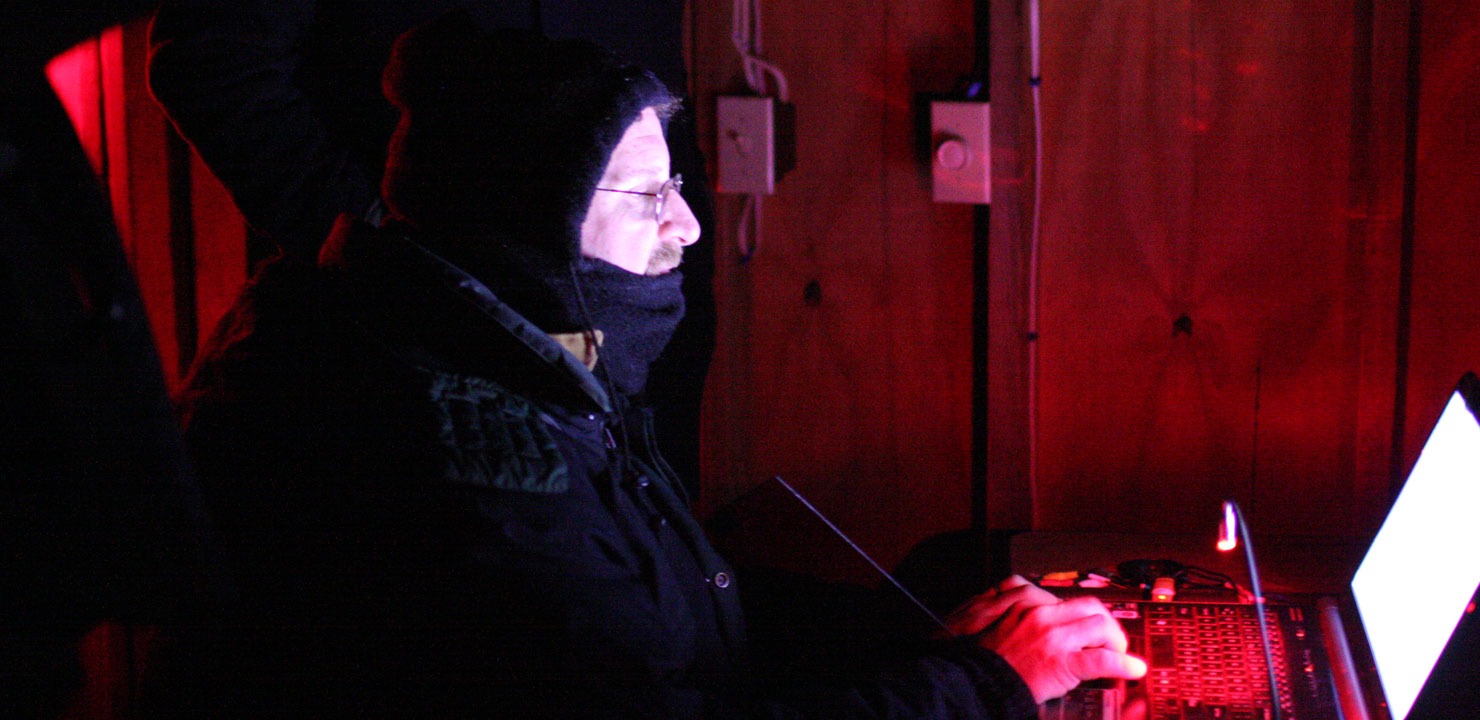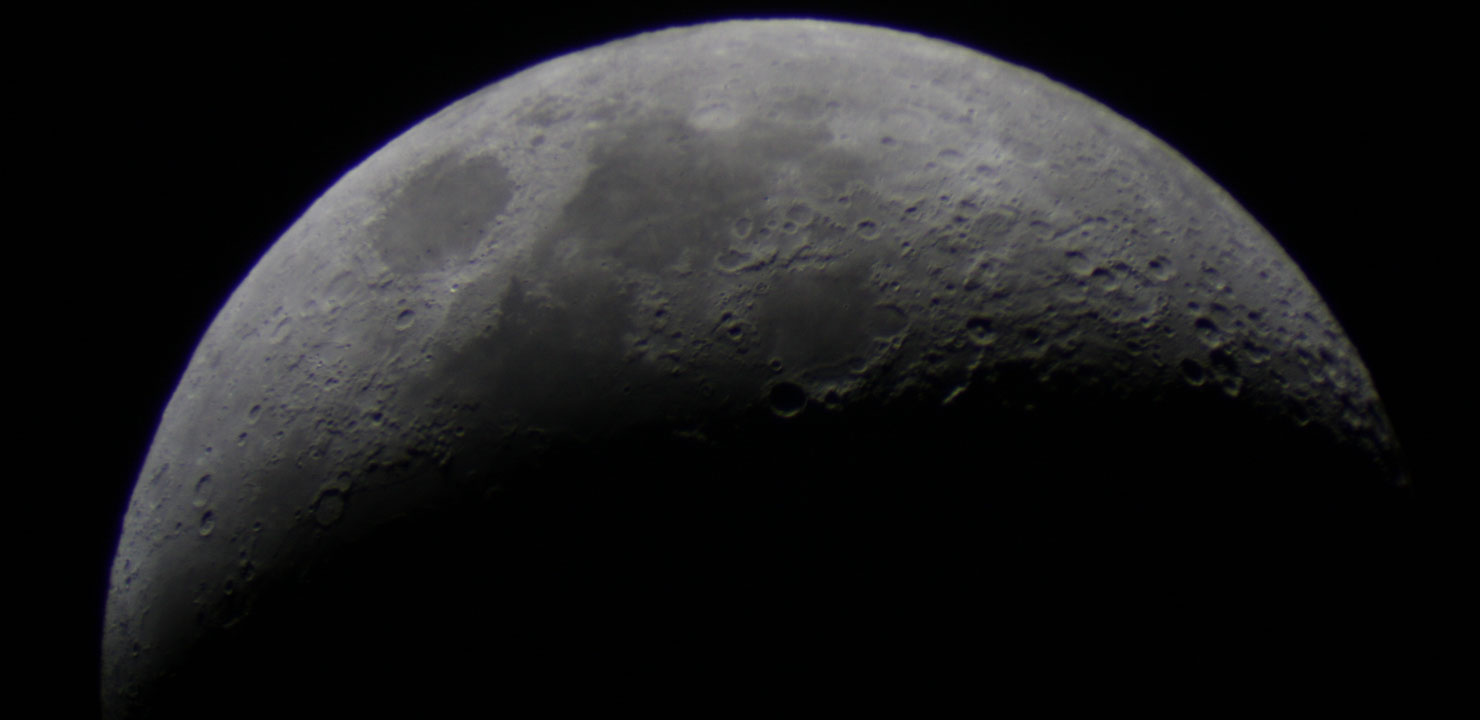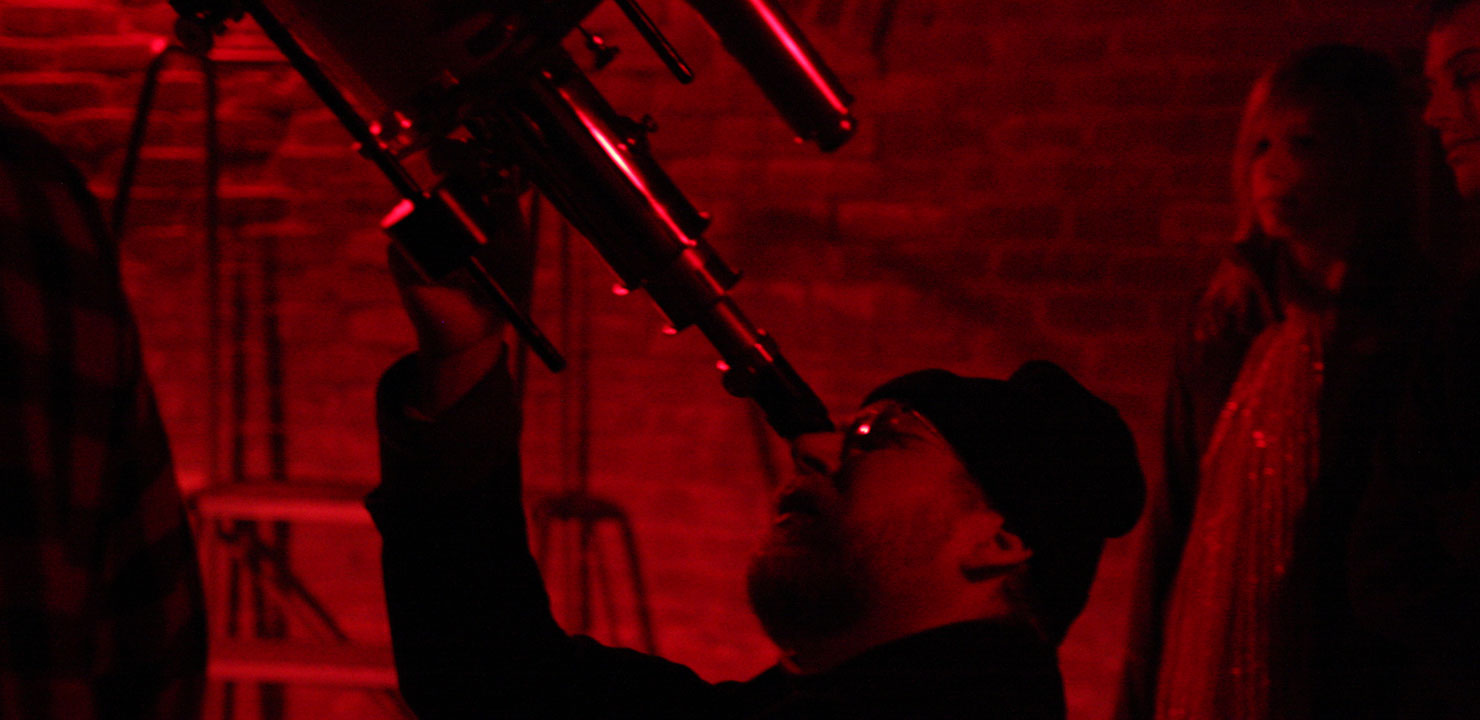
Crescent Moon & Evening Planets
by Conrad Cardano, Jim Hendrickson, Bob Horton & Steve Hubbard
On the final weekend of this unusually warm January, the observatory remains clear of snow (last week's storm washed away by a late-week rain). An early front pushed through wihich dropped temperatures into the high 30s after a brief period of scattered clouds and blustery wind. The sky transparency was high but seeing was relatively poor as evidenced by Sirius high degree of rapid scintiliation. Orion sparkled beautifully high in the south while the waxing crescent Moon dominated the west, hung perfectly between Venus and Jupiter. Rarely are we treated with a sky so full of dazzling naked-eye delight.
Bob, Conrad, Dave, Jim, and Tom had arrived early and were already present for a board of directors meeting earlier in the afternoon. Tom and Dave stayed for a few minutes, long enough to get a look through the Clark, staffed by Bob, and then left. Conrad opened the 16-inch Meade and Steve Hubbard connected his Mallincam to the 12-inch Meade.
Bob turned the Clark to the Moon first, using a 40mm Kellner eyepiece he had recently acquired. This is a perfect match for this telescope as it showed the entire Moon in very good detail. The dark side was still visible behind the 4-day crescent, and we watched sunrize over Copernicus and some of the craters in Mare Imbrium were displayed in striking relief.
Later turning to Jupiter, the seeing wasn't too steady for high magnification views, but several belts were clearly visible. The Galilean Moons were arranged in such a way that only 2 were visible, Ganymede close in to the west, and Callisto farther out to the east. Europa was transiting the disk of Jupiter, but not readily visible due to less than adequate seeing conditions. Io was eclipsed.
Unfortunately, Venus is too low in the trees to the west to be observed by any of the telescopes at Seagrave.
Turning to Orion, we found the nebula to be displaying a great deal of dubtle structure and the Trapezium clearly defined.
Bob turned the scope to Sirius briefly before turning back to Jupiter as another couple arrived. We kept the scope on Jupiter for the brief remainder of the session.






